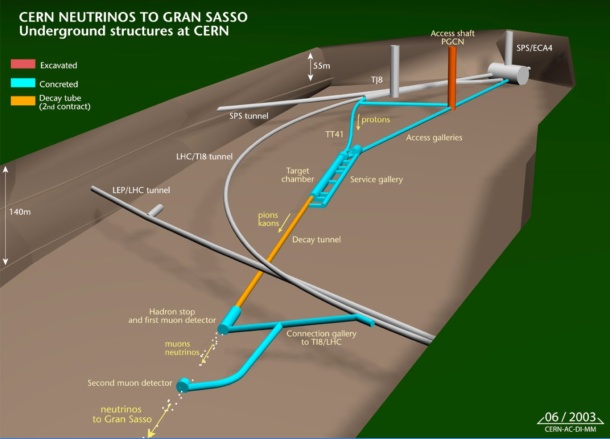CERN neutrino shock may be down to faulty connector

The surprising discovery of neutrinos travelling faster than light, which would challenge some of our core assumptions of physics, may have been the result of errors in the equipment used in the experiment.
Scientists at CERN shocked the physics establishment last September, when they said tests in the enormous Oscillation Project with Emulsion-Racking Apparatus (OPERA) experiment appeared to have shown the subatomic particles travelling slightly faster than the speed of light. According to Einsteinian theory, nothing can move faster than light.
A further test in November seemingly backed up the finding, but on Thursday CERN said it had "identified two possible effects that could have an influence on its neutrino timing measurement". More tests need to be carried out before CERN can be sure what — if anything — has gone wrong, though.

The giant OPERA experiment found neutrinos travelling faster than light, but flawed kit may be to blame Image credit: CERN
"The first possible effect concerns an oscillator used to provide the time stamps for GPS synchronisations. It could have led to an overestimate of the neutrino's time of flight," CERN said in a statement.
"The second concerns the optical fibre connector that brings the external GPS signal to the OPERA master clock, which may not have been functioning correctly when the measurements were taken. If this is the case, it could have led to an underestimate of the time of flight of the neutrinos," the research facility added.
CERN spokesman James Gillies told ZDNet UK that, contrary to reports of the second flaw involving a 'loose cable', it was a diode in the connector that the scientists suspect may be faulty. A loose cable "would have been found more quickly" as cables had been repeatedly tested, he said.
The OPERA project involves sending beams of neutrinos through a 730km subterranean tunnel, from CERN's Geneva facility to the OPERA detector, which is housed in Italy's Gran Sasso laboratory.
When they first reported their surprising findings, the OPERA team were clear that they were not definitely saying neutrinos could travel faster than light, but were simply revealing what they had observed.
Gillies said further tests would take place in May. He noted that, even if there really are flaws with the oscillator or connector, it cannot be established yet whether these flaws were in place while the earlier experiments were taking place.
"We can't look back in time and see whether the equipment was in that state when the data was taken," he said. "Until we put the beam back, we won't know for sure."